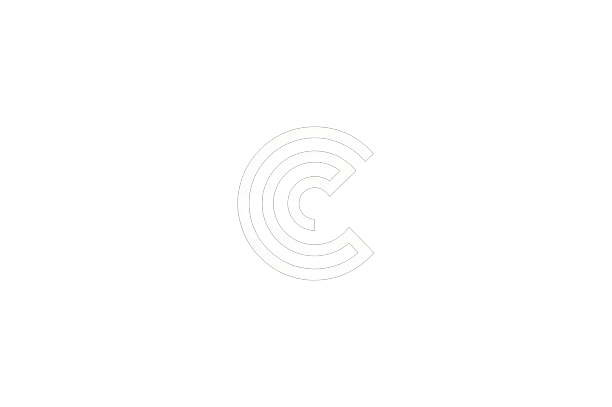Monday to Saturday - 8:00 -17:30

Ethereum has long been the go-to platform for decentralized applications (dApps), decentralized finance (DeFi), and smart contracts. However, as the network has grown, it has faced challenges in scalability, transaction speed, and high gas fees. These limitations have paved the way for Layer-2 (L2) solutions, which are designed to enhance Ethereum’s performance by handling transactions off-chain while relying on Ethereum’s robust security for final settlement.
In this blog, we’ll explore some of the most promising Layer-2 solutions for Ethereum, their benefits, and how they are shaping the future of the blockchain ecosystem.
What Are Layer-2 Solutions?
Layer-2 solutions are protocols that operate on top of the Ethereum mainnet (Layer-1). They aim to offload a significant portion of the transaction load from Ethereum, allowing for faster and cheaper transactions without compromising on security. By processing transactions off-chain and only settling on-chain, Layer-2 solutions alleviate network congestion and lower the costs for users.
These solutions are particularly crucial for Ethereum as the network expands to accommodate more decentralized applications, NFTs, and DeFi protocols.
Top Layer-2 Solutions for Ethereum
1. Arbitrum
Arbitrum is one of the most talked-about Layer-2 solutions for Ethereum. It uses Optimistic Rollups, a scaling technique that bundles multiple transactions into a single batch, which is then posted on the Ethereum mainnet. Optimistic Rollups operate under the assumption that transactions are valid unless proven otherwise, making them faster and more efficient.
- Benefits of Arbitrum:
- Lower gas fees compared to Ethereum’s Layer-1.
- High throughput, enabling fast transactions.
- Full compatibility with Ethereum smart contracts, making it easy for developers to migrate dApps from Layer-1 to Arbitrum.
Arbitrum has already seen widespread adoption in the DeFi space, with protocols like Uniswap and SushiSwap integrating it to provide users with a smoother experience.
2. Optimism
Like Arbitrum, Optimism also utilizes Optimistic Rollups to improve Ethereum’s scalability. It’s designed to reduce gas fees and increase transaction throughput while maintaining the security of Ethereum’s mainnet. Optimism has gained traction due to its ease of use for developers and its support from major Ethereum projects.
- Benefits of Optimism:
- Compatible with Ethereum tools and applications.
- Faster transactions and lower fees, making DeFi and dApp interactions more affordable.
- Strong backing from Ethereum developers and DeFi projects.
Optimism has been integrated by various decentralized exchanges (DEXs) and lending platforms, including Compound and Aave, further solidifying its place in the Layer-2 ecosystem.
3. Polygon (MATIC)
Polygon is one of the most established Layer-2 solutions, with a focus on creating an interoperable multi-chain network for Ethereum. Formerly known as Matic Network, Polygon uses a variety of scaling methods, including sidechains and plasma chains, to handle transactions off the Ethereum mainnet.
Polygon’s ecosystem has grown exponentially, becoming home to a vast range of DeFi projects, NFTs, and games.
- Benefits of Polygon:
- Significant reduction in transaction fees.
- Fast block times, with transactions settling in seconds.
- Interoperability with Ethereum and other blockchains, allowing for cross-chain functionality.
Many well-known projects, such as Aave and SushiSwap, have migrated to Polygon to provide users with faster and cheaper transactions. Polygon has also established itself as a leader in the NFT space, attracting projects like OpenSea and Decentraland.
4. zkSync
zkSync is an Ethereum Layer-2 scaling solution that utilizes Zero-Knowledge Rollups (zk-Rollups) to achieve high throughput and low-cost transactions. Unlike Optimistic Rollups, which assume transactions are valid until proven otherwise, zk-Rollups use mathematical proofs to verify transactions off-chain. This makes zkSync particularly secure while still reducing the load on Ethereum’s mainnet.
- Benefits of zkSync:
- Faster and cheaper transactions without sacrificing security.
- Enhanced scalability, allowing for thousands of transactions per second.
- Strong focus on user privacy, thanks to zero-knowledge proofs.
zkSync is gaining attention as one of the most secure Layer-2 solutions, with a growing list of dApps and DeFi platforms exploring its capabilities.
5. StarkNet
Another promising Layer-2 solution leveraging zk-Rollups is StarkNet. Developed by StarkWare, StarkNet is a decentralized, permissionless Layer-2 network that allows for unlimited scalability without compromising Ethereum’s security. It uses STARK proofs (Succinct Transparent Arguments of Knowledge) to compress and verify large amounts of data off-chain before submitting them to Ethereum.
- Benefits of StarkNet:
- Superior scalability and efficiency through zk-Rollups.
- High security due to the use of STARK proofs.
- Enables complex computations, making it ideal for advanced dApps and DeFi protocols.
StarkNet is being used by a range of projects, including DeFi platforms and NFT marketplaces, that require both scalability and high-security standards.
6. Loopring (LRC)
Loopring is a Layer-2 solution specifically focused on enabling faster and cheaper decentralized exchanges (DEXs). Using zk-Rollups, Loopring allows users to trade assets on decentralized exchanges with significantly lower gas fees and faster execution compared to traditional Ethereum-based DEXs.
- Benefits of Loopring:
- Drastically reduced trading fees for DEX users.
- High throughput, making it easier to scale DeFi applications.
- Non-custodial and decentralized, ensuring user funds remain secure.
Loopring is already live and operational, offering one of the most efficient DEX experiences in the Ethereum ecosystem.
7. Immutable X
For the growing world of NFTs, Immutable X offers a Layer-2 solution designed specifically for the trading of non-fungible tokens. Built on zk-Rollups, Immutable X allows for instant and gas-free minting and trading of NFTs on Ethereum without compromising decentralization or security.
- Benefits of Immutable X:
- Zero gas fees for minting and trading NFTs.
- High-speed transactions, enabling a seamless user experience.
- Full compatibility with Ethereum, allowing for NFT interoperability.
Immutable X has partnered with several major gaming platforms and NFT marketplaces, making it a top choice for developers looking to scale their NFT projects without the limitations of Ethereum’s Layer-1.
Conclusion
Layer-2 solutions are critical to Ethereum’s future scalability, reducing congestion and gas fees while maintaining the security of the mainnet. Solutions like Arbitrum, Optimism, Polygon, and zkSync are leading the charge in making Ethereum faster, more affordable, and accessible for developers and users alike.
As Ethereum continues to evolve, especially with upgrades like Ethereum 2.0, these Layer-2 solutions will play a key role in ensuring that the network can handle increased adoption without sacrificing performance or security. For investors and developers, keeping an eye on these Layer-2 projects will be crucial in navigating the future of decentralized finance and blockchain technology.

 Bitcoin
Bitcoin  Tether
Tether  USDC
USDC  Wrapped SOL
Wrapped SOL